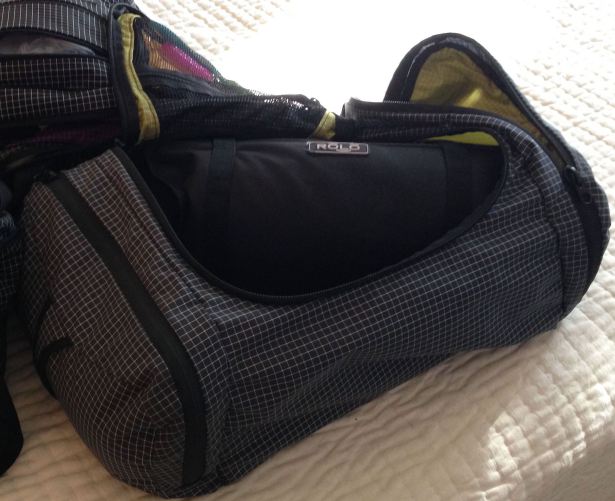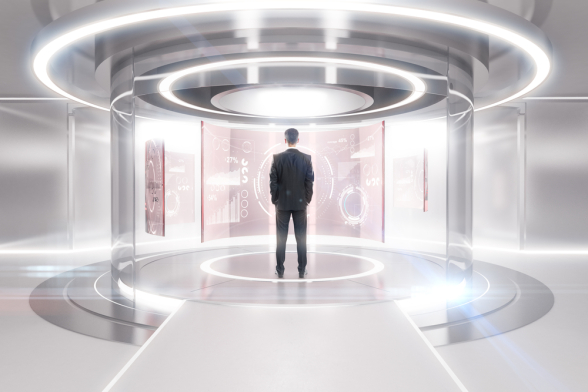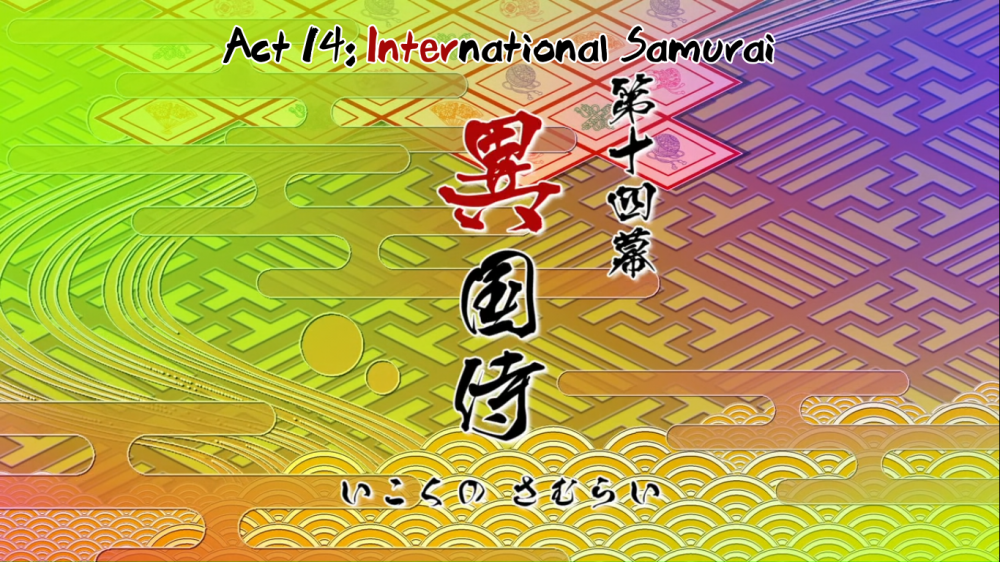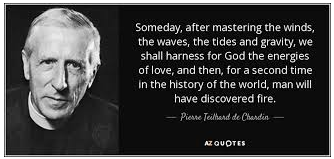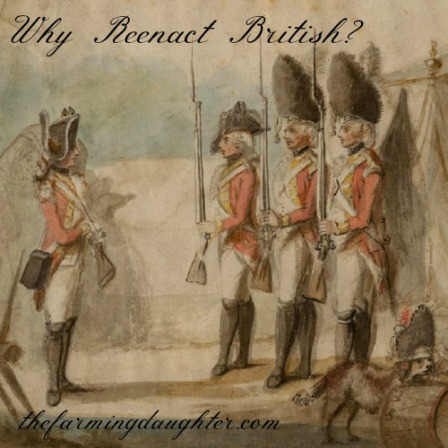
The uncertainty was clear in Mom’s voice. “You’re going to reenact British? Why would you want to do that?” It was a fair question. I had, after all, just announced I was going to start reenacting the Revolutionary War…on the side of the “enemy”.
I have reenacted the 19th century and the American Civil War for over five years. Most of the time I portray a Northern civilian on the side of the Union. This year I decided to branch out into reenacting the 18th century and the Revolutionary War. I am currently researching and sewing to develop a British camp follower impression, a woman who followed the army to lend support through cooking, doing laundry, sewing, and nursing. So why did I decide to portray what is usually viewed as “the bad guys”?
Besides wanting to participate with some of my friends who reenact British, there are several reasons why I chose to side with the Redcoats for my first 18th century impression.
I want to reenact British because…
1.) …someone has to portray them!
You have to admit, it would be a pretty lame reenactment if the brave Continental soldiers and American militia marched out to do battle with no one! There are two sides to every conflict and it’s necessary for reenactors to be willing to rally ’round the King’s Colours as well as the Continental banner.
2.) …I want to accurately tell their story.
It has been said, “History is written by the victors.” As Americans it’s understandable that we would like to glorify and emphasize our side of the story. However, I think the British narrative deserves to be told as well. To gain an accurate picture of the war we need to look at the events from both the American and British perspectives. I hope through my portrayal I will be able to negate some of the common misconceptions and bias surrounding the British.
3.) …I want to humanize them.
This somewhat goes along with #2. Since the British were on the opposing side we tend to brand them as vengeful monsters. History is not as cut and dried as “good guys” and “bad guys”, however. There were men who acted honorably and those who acted deplorably on both sides. I want my persona to bring the British to life, to make their motivations, hopes, desires, and struggles relatable.
4.) …I might have been one in the 18th century.
Before the Revolutionary War, the 13 colonies belonged to Great Britain and the colonists themselves were British subjects. At the time, rebelling against England was viewed by some as a treacherous and foolish decision, essentially turning traitor on your own country. Even if you disagreed with some of England’s policies, that didn’t necessarily mean you were willing to take the radical step of revolution. With the perspective of time it’s easy to unhesitatingly claim that we would have sided with the Patriots, but that might not have been the case.
5.) …they had more camp followers.
Both the American and British armies had women camp followers, but the Crown forces tended to have a higher ratio. It is entirely appropriate to portray a follower of either army, but the description of the British with their “Herds of Women” makes it especially relevant to portray one. The double benefit is most of the clothing I will be sewing for my British impression will translate to an American impression as well.
It had been suggested to me that portraying the British will disrespect the sacrifices our founding fathers made. I believe the contrary. Accurately and knowledgeably representing the British will only further show how truly amazing the American victory was over the super power of Great Britain. I’m excited to begin this foray into a new historical portrayal!
What do you think of reenactors portraying “the other side”? If you are a reenactor, what made you choose your particular persona?
-Michaela “The Farming Daughter”
(Post image: detail of “The Relief” by William Dickinson after Henry William Bunbury, 1781)
Advertisements Share this: